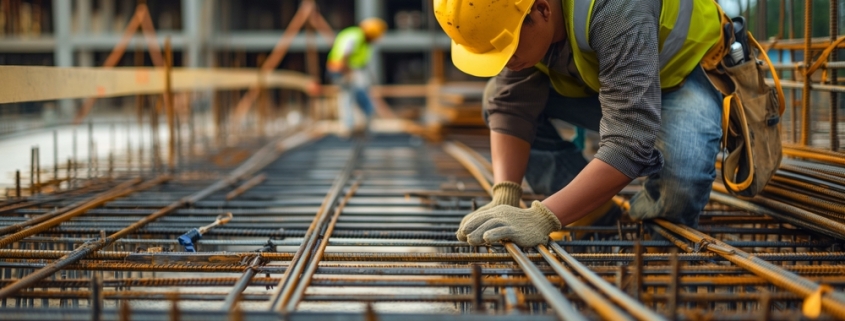By CONSTRUCTIONDIVE | Originally posted on constructiondive.com
Illegal immigration has dominated the headlines during this election season, but building pros are calling for help to get skilled workers to jobsites.
Construction has an open secret when it comes to the number of workers lacking permanent legal status on jobsites.
Immigrants entering the country illegally make up about 23% of the construction laborer workforce in the United States, according to a 2021 report from the Center for American Progress. A Pew Research Center study pegged that share at 15% for all workers in construction jobs.
Those numbers underpin a tension in the construction sector where an industry that’s starving for help sometimes rolls out the welcome mat to workers lacking the status to work in the country legally. Doing so can give contractors who are willing to look the other way a leg up on the competition, but it also opens the door to abuses by employers.
“Nobody benefits from having a large pool of undocumented workers in the construction industry,” said Brian Turmail, vice president of public affairs and workforce at Associated General Contractors of America. “It becomes too easy for those workers to be exploited by unscrupulous contractors who then underbid responsible contractors.”
As the 2024 presidential election draws near, the issue has taken on even more importance for construction executives looking for a way to legally expand their workforces.
The construction industry will need to bring in nearly 454,000 new workers in 2025 on top of normal hiring trends to meet industry demand, according to Associated Builders and Contractors. That estimate also presumes construction spending growth slows significantly next year, even though other data indicates nonresidential construction planning should accelerate by mid-2025.
For that reason, construction trade organizations continue to advocate for meaningful reform to the current immigration system. That means pushing for more programs to allow workers to lawfully enter the country and work in construction, said Anirban Basu, ABC chief economist.
“If we can figure out a way to deal with these 11 [million] or 12 million undocumented migrants — is there a pathway to, if not citizenship, at least a work visa? Can we bring them out of the shadows?” said Basu. “Can they be employed by a contractor without fear of penalty, either for the employee or the employer?”
H-2B visa reform
One of those reforms is to raise the current cap of 66,000 visas issued annually under the H-2B visa program, said Kristen Swearingen, ABC vice president of legislative and political affairs.
The H-2B visa program provides temporary foreign workers to industries like construction, helping to address labor shortages.
“Commonsense solutions to address the 12 million undocumented immigrants in the United States include expansion of H-2B visa and reforms to the overall program,” said Swearingen. “Currently, the H-2B cap is too low to meaningfully improve the massive shortage of workers in construction and other industries, and that cap should be based on economic need.”
In terms of the presidential election, both candidates have pledged to decrease illegal crossings at the border. But when it comes to making it easier for foreign-born nationals to immigrate legally for work, each has taken a different stance.
Vice President Kamala Harris, if elected, is likely to continue the Biden administration’s approach to expanding legal immigration pathways such as the H-2B visa program, said L.J. D’Arrigo, partner and leader of the immigration practice at Harris Beach, a Rochester, New York-based law firm.
During Harris’ time as vice president, the Department of Homeland Security announced a record allocation of 20,000 H-2B temporary nonagricultural workers visas for citizens of El Salvador, Guatemala, Honduras and Haiti, as part of almost 65,000 supplemental H-2B visas made available for fiscal year 2023.
“I think it’s clearer to project what would happen under a Harris administration. I would expect that there would be at least a status quo in terms of H-2B visa allocation and availability,” said D’Arrigo. “Although Trump personally uses the H-2B visa program for his businesses, it’s less clear on how he will approach the H-2B visa program based on his history of restricting legal immigration.”
During his administration, President Donald Trump nearly doubled the number of H-2B visas available in 2019. However, in June 2020, his administration suspended the program, saying it was to protect U.S. workers from job competition due to the economic downturn caused by the COVID-19 pandemic.
“Little has been reported on what Trump’s policy will likely be on ‘legal immigration’ in a second Trump term,” said D’Arrigo. “We have the benefit of forecasting what Trump immigration may look like in 2025 through the lens of Trump’s prior administration. Under his administration, we witnessed a record-breaking number of visa denials, leaving U.S. businesses without the talent they need to succeed in a globally competitive economy.”
DACA and TPS
In addition to significant expansion to the H-2B visa program, AGC has asked Congress to enact legislation authorizing both the Deferred Action for Childhood Arrivals and Temporary Protected Status programs.
DACA grants deportation relief and work permits to young immigrants brought to the U.S. as children, often referred to as “Dreamers.” Trump attempted to end the DACA program in 2020, but Congress blocked the move. If re-elected, Trump will likely seek to end DACA again, said D’Arrigo.
TPS provides temporary legal status to immigrants from countries under crisis. Trump would likely seek to roll back TPS designations as well.
On the other hand, D’Arrigo anticipates a Harris administration to make DACA a high priority, as it has been for Biden’s immigration policy.
But just increasing the number of workers in the U.S. isn’t enough to solve the issue for construction, said Basu.
Opponents of immigration reform say bringing in more workers would reduce wages, according to the Center for Immigration Studies. However, for Basu, the key challenge remains finding workers with the specialized skills.
“I don’t talk about worker shortages so much because I don’t think it’s really about a worker shortage,” said Basu. “It’s about a skills shortage, a skilled worker shortage.”
Many of the people coming across the border lack the refined skill sets needed for the types of equipment, technologies and processes used in the U.S. construction industry, said Basu. So, while the influx of workers can help fill gaps in the short term, it does not address the core issue of specialized training.
Training solutions
AGC is engaged with U.S. Reps. Morgan Luttrell, R-Texas, and Tom Suozzi, D-N.Y., to craft bipartisan legislation to address a range of immigration and work authorization programs.
AGC suggests doubling the funding for the Perkins Act, a federal funding program that supports career-technical education, and to boost federal post-secondary funding for construction education and training programs. Federal officials currently put about 80% of post-secondary funding into four-year degree programs even though only 38% of Americans will earn such a degree, said Turmail.
Basu also highlighted the need to retain skilled foreign talent. He questions the logic of sending back talented individuals trained in U.S. universities to their home countries, arguing if they are “gifted in science, technology, engineering or math, we need them here.”
“There are a ton of kids coming from India, China and elsewhere to our world-class colleges and universities [in the United States.] They get their STEM degree, and then what do we do? We send them back to Seoul, Beijing, Delhi, Baku, or wherever it happens to be,” said Basu. “That is silly. I’ve said many times, let’s build a wall to keep those people in.”
Improvements to training and comprehensive immigration reform remain equally critical to fix the workforce issue, according to AGC. Turmail highlights the need for both better border security and a legal pathway for immigrants already in the industry.
“There is no doubt we need better border security and also need a path to earned, legal status for undocumented workers already in the country,” said Turmail. “We remain focused on reinvigorating the domestic pipeline for new workers and ensuring there are sufficient, lawful ways for people to enter the country and work in construction so our industry can keep pace with demand for new infrastructure and economic development projects.”










